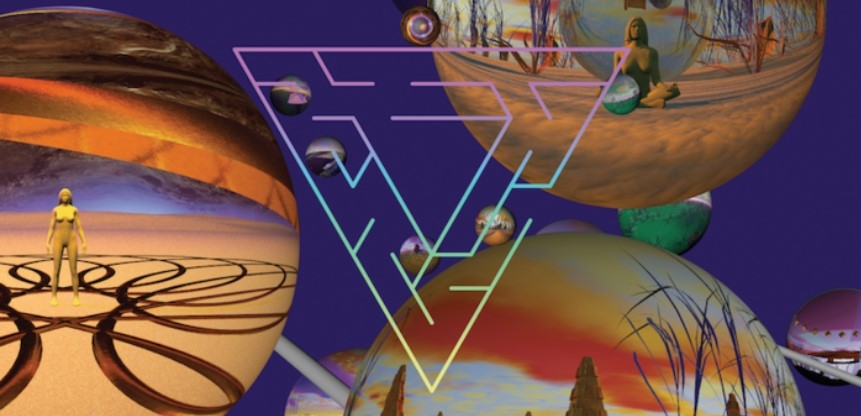The interactive artwork depicts dream-based landscapes, using virtual reality, video installation, and various objects in the gallery space. For many years the artist has been using drawings to document increasingly more and more complex lucid dreaming experiences: culture symbol networks, cyborgs, unknown culture, and language artifacts placed in architectonic environments and other landscapes of unusual worlds. These notes of the subconscious in the form of drawings are the basis for the artworks in the exhibition. The exhibition is based on research in neuroscience, anthropology, quantum physics, and the artist’s drawings.
Based on the many-world interpretation of quantum physics by the scientist Hugh Everett, each time a quantum experiment is performed with the possibility to have various possible results, all results come to pass but we see only one outcome; the one that is measured/observed in this world. In fact, all the outcomes have come to fruition, but each in their own world. These invisible worlds can be considered to be completely real. They obey the laws of physics the same as our world. Each time an experiment is performed and measurements have taken place, this world is either separated or braches into a new history. The new world is identical to the original world to the last atom, however, it will have a new history, slightly different and conflicting to ours, starting from the event that caused this branching off.
However, dreams consist of simulations of what could have been and what could be in the eyes of the dreamer. The first hypothesis proposes that dreams depict actual events, that take place in the alternate world, that came into being when it branched off from the original world. Taking into consideration that in the eyes of the dreamer the simulations are alternate history and future constructions, the artist asks a question: where do these alternate histories originate from? The most rational answer, of course, is that they originate in the dreamer’s mind. But if the many-world theory is correct and dreams consist of simulations of what could have happened and what could happen in the dreamer’s world, that branched off from the dreamer’s original world, then human dreams could be portals to life in one of the branched off worlds – based on the many-world interpretation of quantum physics.
Zane Zelmene is a multimedia artist who graduated from the Art Academy of Latvia, faculty of visual communication, and developed her skills in the University of Lisbon, new media art faculty. The artist works in the fields of video art, audiovisual performance, and land art. She experiments with various technologies like virtual reality, video projection mapping and 360-degree video. Her diverse works examine the intersection between technology, art and nature, antiquity and modernity, opposites, and their coexistence in space.




